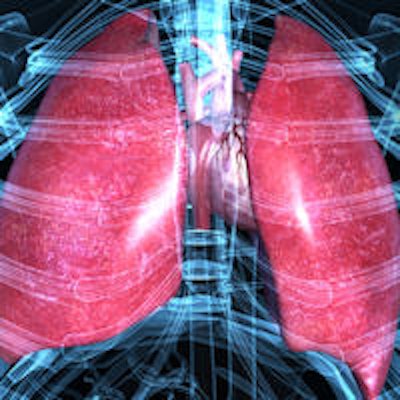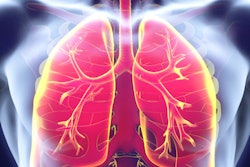
Researchers from Canada trained nonradiology personnel to use computer-aided detection (CAD) software to analyze CT lung screening scans and triage the ones that should be passed on to radiologists for review, according to a study published on Wednesday in the Journal of Thoracic Oncology.
In the retrospective study, which reviewed more than 800 baseline low-dose CT (LDCT) scans from the Pan-Canadian Early Lung Cancer Detection Study, researchers trained what they called "nonradiology technicians" to use CAD software (Cirrus, Diagnostic Image Analysis Group) to identify solid and subsolid lung nodules and to highlight nodule features and assess a malignancy risk score.
The technicians using the system achieved 97.8% sensitivity and 98% specificity for identifying abnormal scans, delivering significant reductions in interreader variability, said the group from Radboud University Nijmegen Medical Center in the Netherlands and the British Columbia Cancer Research Center in Vancouver.
Having a technician aided by CAD technology as a first reader will likely improve the consistency and quality of scan interpretation, noted Dr. Alexander Ritchie; Calvin Sanghera; Colin Jacobs, PhD; Dr. Stephen Lam; and colleagues in a statement accompanying the release of the study (J Thorac Oncol, March 16, 2016).
The 2011 National Lung Screening Trial (NLST) found that annual screening with low-dose CT can reduce lung cancer mortality by at least 20% compared with chest x-ray; however, the low specificity of LDCT scans can lead to a high rate of false positives and additional scans to rule out malignancy.
Owing to this variability, training technicians to use CAD software has the potential to improve the accuracy and efficiency of low-dose lung cancer screening, the authors wrote.
In their study, Ritchie and colleagues analyzed 828 baseline LDCT scans from the previously reported Pan-Canadian trial, which found 136 subjects with proven malignant nodules, 556 with proven benign nodules, and 136 with no nodules or calcified nodules 1 mm or larger.
Nonradiology technologists were trained to use the Cirrus software to triage the scans. All scans were classified as normal (no nodules ≥ 1 mm or benign nodules) or abnormal (containing nodules or another abnormality). The technologists' results were compared with the diagnostic interpretation by the Pan-Canadian radiologists.
Using the CAD software, the technologists correctly categorized all 136 nodules with proven malignancy as positive. Among the 136 scans originally classified as normal, 85 were found to have noncalcified nodules. Among the 556 screens classified as having benign nodules, 15 (2.7%) were misclassified as normal by the technician.
The technologists delivered sensitivity of 97.8% and specificity of 98% using a 1-mm nodule size cutoff. The average time needed to review the scan with the software and generate a report was 208 ± 120 seconds.




















